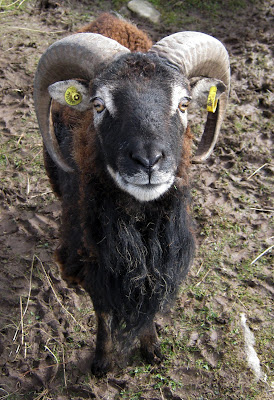As featured in the Shetland Times (a few weeks ago now), there are Alpacas in the sooth end. They are at Dalsetter Wynd at Boddam, in the fields just south of the houses there.


The Alpaca Vicugna pacos is a domesticated species of South American camelid. It resembles a small llama in appearance. Alpacas are kept in herds that graze on the level heights of the Andes of southern Peru, northern Bolivia, Ecuador, and northern Chile at an altitude of 3,500 m (11,500 ft) to 5,000 m (16,000 ft) above sea-level, throughout the year. Alpacas are considerably smaller than llamas, and unlike llamas, alpacas were not bred to be beasts of burden but were bred specifically for their fiber. Alpaca fiber is used for making knitted and woven items, much as wool is. These items include blankets, sweaters, hats, gloves, scarves, a wide variety of textiles and ponchos in South America, and sweaters, socks, coats and bedding in other parts of the world. The fiber comes in more than 52 natural colors as classified in Peru, 12 as classified in Australia and 16 as classified in the United States. Note that the leftmost alpaca has a piece of grass stuck to its nose - I successfully removed it without getting bitten or spat upon.


Not all alpacas spit, but all are capable of doing so. "Spit" is somewhat euphemistic; occasionally the projectile contains only air and a little saliva, although alpacas commonly bring up acidic stomach contents (generally a green grassy mix) and project it onto their chosen target. Spitting is mostly reserved for other alpacas, but an alpaca will occasionally spit at a human. For alpacas, spitting results in what is called "sour mouth". Sour mouth is characterized by a loose-hanging lower lip and a gaping mouth. This is caused by the stomach acids and unpleasant taste of the contents as they pass out of the mouth.

In the textile industry, "alpaca" primarily refers to the hair of Peruvian alpacas, but more broadly it refers to a style of fabric originally made from alpaca hair but now often made from similar fibers, such as mohair, Icelandic sheep wool, or even high-quality English wool.[citation needed] In trade, distinctions are made between alpacas and the several styles of mohair and luster. Alpacas and llamas can successfully cross-breed. The resulting offspring are called huarizo, which are valued for their unique fleece and gentle dispositions.


Alpacas do not like being grabbed. Some alpacas tolerate being stroked or petted anywhere on their bodies, although many do not like their feet, lower legs, and especially their abdomen touched or handled. To help alpacas control their internal parasites they have a communal dung pile, where they do not graze. Generally, males have much tidier, and fewer dung piles than females who tend to stand in a line and all go at once. One female approaches the dung pile and begins to urinate and/or defecate, and the rest of the herd often follows. Because of their preference for using a dung pile, some alpacas have apparently been successfully house-trained.

This horny sheep was alson in the field with the alpacas.












.jpg)



No comments:
Post a Comment
Leave your comments here, all comments are moderated before publishing.